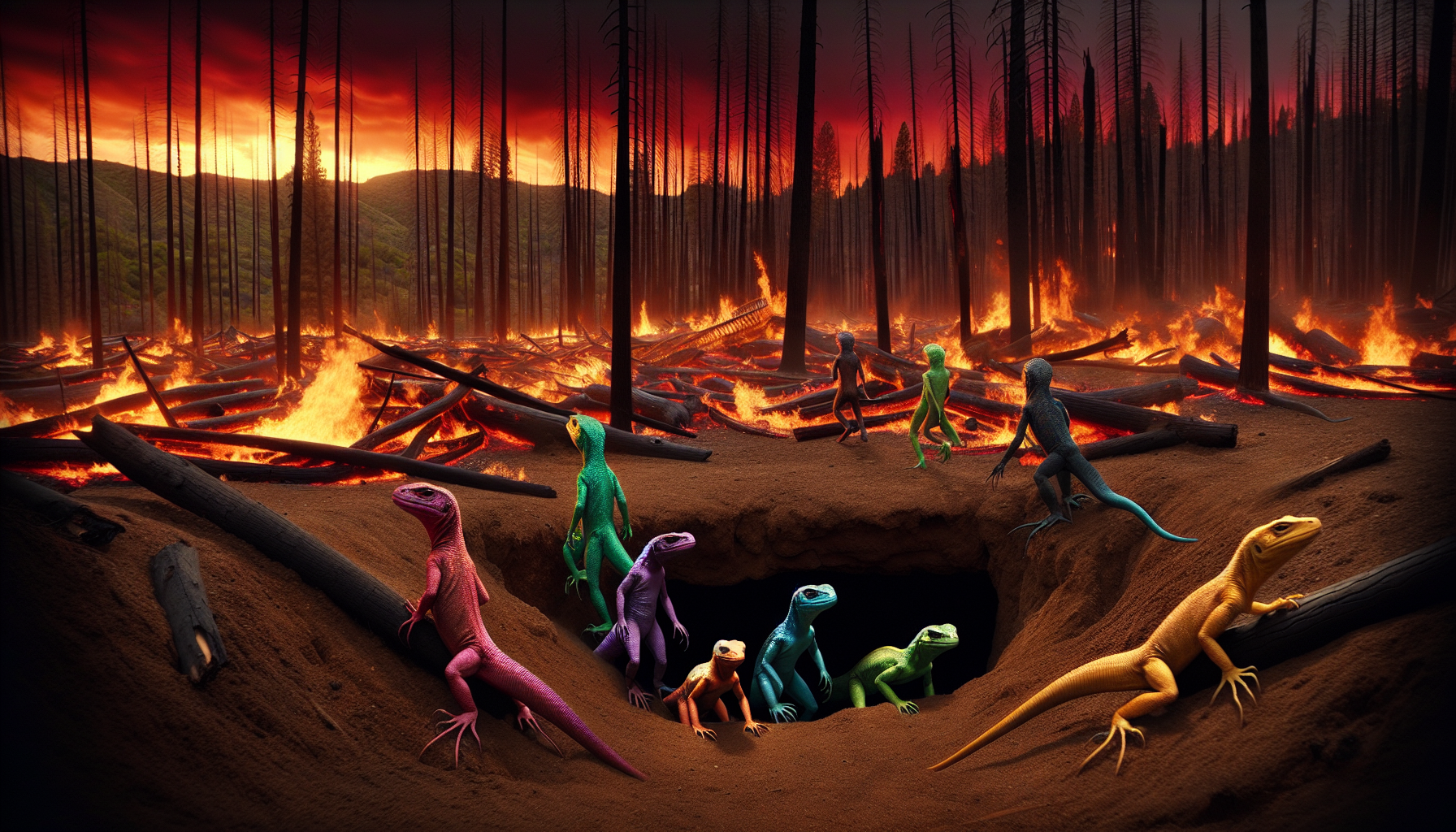The Role of Wildfires in Our Ecosystem
Wildfires are often viewed as destructive events, wreaking havoc on forests, homes, and wildlife. However, they play a complex role in many ecosystems by clearing out old growth, allowing new vegetation to thrive. This process of regeneration is crucial for maintaining a healthy environment.
Regeneration and Growth
After a wildfire, nutrient-rich ash enriches the soil, promoting the growth of various plant species. These new plants provide food and shelter for different animals and insects. Ecosystems have adapted over thousands of years to include fire as a necessary part of their lifecycle.
Wildfires and Animal Behavior
When wildfires occur, many animals flee to safer areas. However, some species have adapted to thrive in the aftermath. Animals like certain types of birds and mammals have learned to take advantage of the new growth and abundant resources. This adaptability showcases the resilience of nature.
The Legends of Lizard People
Among the tales that arise regarding unusual wildlife behavior following wildfires are the legends of the “Lizard People.” These tales aren’t just modern myths; they connect with ancient beliefs and folklore.
Historical Context
The concept of lizard people goes back centuries, often tied to discussions about alien encounters or underground civilizations. With roots in ancient mythologies, these stories depict beings that live beneath the surface, often surfacing during times of turmoil, such as natural disasters, including wildfires.
Myths and Folklore
Many cultures have myths about creatures resembling lizards or reptiles. In some Native American folklore, these beings are viewed as protectors of the earth, emerging when the balance of nature is disrupted. This reflects the human tendency to explain the unknown, especially during unsettling events like wildfires.
Popularity in Modern Culture
In contemporary times, the idea of lizard people has gained traction through pop culture, particularly within conspiracy theory circles. These stories have found a home in television series, movies, and even social media. They capture the imagination and reflect society’s fascination with the unexplained.
Environmental Impacts of Wildfires
While the myths surrounding lizard people are fascinating, it’s essential to consider the real and immediate impact of wildfires on the environment.
Air Quality Deterioration
During wildfires, massive amounts of smoke and particulate matter are released into the atmosphere, significantly affecting air quality. This leads to health risks for nearby communities, especially for vulnerable groups like children and the elderly.
Respiratory Issues
Exposure to poor air quality can result in respiratory conditions exacerbating existing health problems. Areas afflicted by wildfires often experience spikes in asthma and bronchitis cases as people struggle to breathe in the polluted air.
Soil Erosion
The loss of vegetation following a wildfire can lead to significant soil erosion. Trees and plants act as anchors, preventing soil from washing away during rainstorms. After fires, this protective cover is stripped away, leaving the soil vulnerable to erosion, which can lead to landslides and further degradation of the landscape.
The Water Cycle Impact
Soil erosion also disrupts the water cycle. Without adequate vegetation, the land cannot absorb rainfall effectively, leading to increased runoff and flooding in some areas. This cycle adds more stress to ecosystems already impacted by wildfires.
Ecological Entities Under Stress
In the wake of a wildfire, various species face enormous stress. The shift in their environments forces them to adapt quickly.
Wildlife Migration
A wildfire can disrupt natural habitats, causing wildlife to migrate to cooler or untouched areas. This migration can lead to competition for food and territory among species, as they all converge on similar resources.
Predator-Prey Dynamics
The changing landscape can also affect predator-prey dynamics. Predators may find it challenging to hunt effectively in burnt areas, while prey species may find refuge and food in regeneration zones. This shifting balance impacts populations and ecosystems significantly.
Invasive Species Takeover
Wildfires can unwittingly promote the growth of invasive species that thrive in disturbed environments. These non-native plants and animals can outcompete the local flora and fauna, disrupting the delicate balance that existed prior to the fire.
Long-term Ecological Consequences
The introduction of invasive species can lead to long-term ecological changes. Native species may become endangered, affecting biodiversity. This process is sometimes slow and insidious, making it challenging for humans to recognize the extent of the changes until it’s too late.
Rethinking Our Relationship with Nature
The growing disbelief in coincidences, illustrated by tales of lizard people, signifies a shift in how we perceive our environment. While we engage with these myths, we must also grapple with the concrete consequences of wildfires on our ecosystem.
Awareness and Education
Understanding the environmental impacts of wildfires is crucial for communities at risk. Educational programs can help people better prepare for wildfires and understand their significance in the larger ecological scheme.
Community Initiatives
Establishing community initiatives to discuss wildfire preparedness can be life-saving. These programs can involve local fire departments and environmental groups working together to spread the word about fire safety and ecosystem awareness.
Balancing Myths and Reality
While legends about lizard people can be fun and intriguing, it’s vital to ground our understanding in science and actual environmental concerns. The interplay between myth and reality ultimately shapes how communities respond to crises like wildfires.
Future Perspectives
As we face increasing wildfire occurrences due to climate change, integrating ecological knowledge with ongoing conversations about folklore will ensure that communities are better prepared physically and mentally. Understanding our environment and its complexities can foster a stronger connection to the land we inhabit.
In navigating the aftermath of wildfires, communities can either cling to stories of lizard people emerging from the underground or ground themselves in the reality of environmental resilience and regeneration. Regardless of where one stands, the conversation about wildfires and their impact on our world will continue to unfold.
